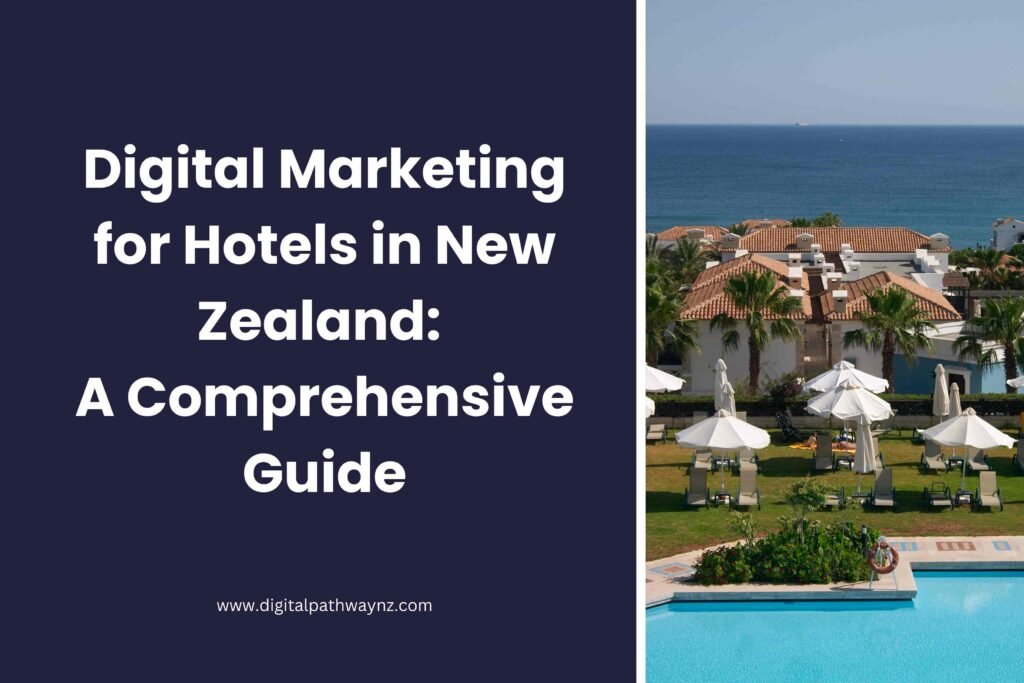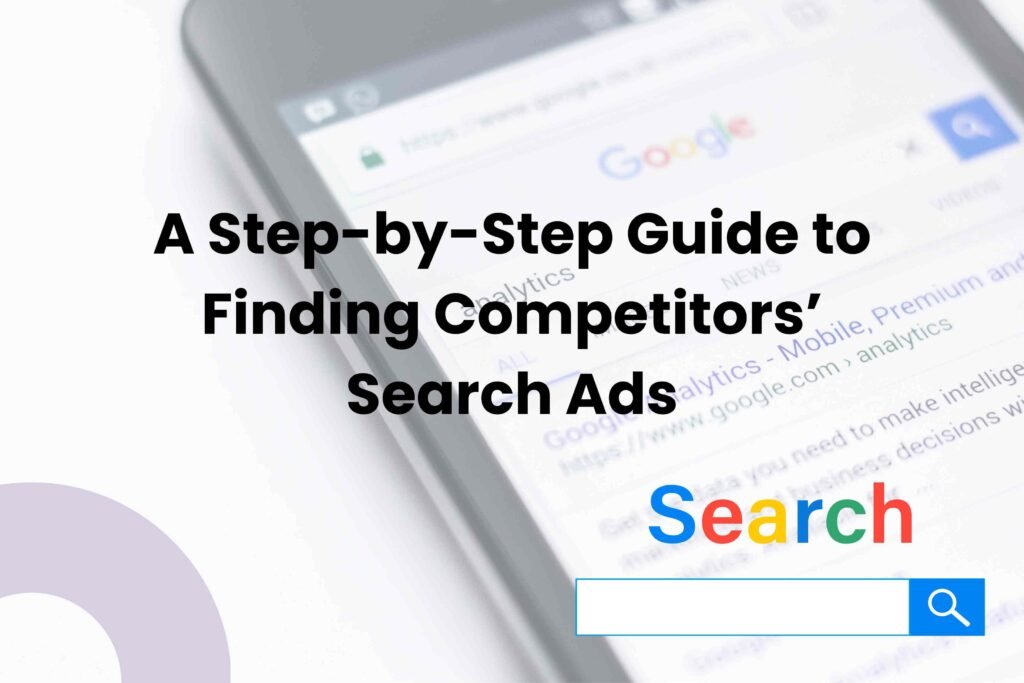E-commerce marketing is essential for any online retail business aiming to thrive in today’s competitive digital landscape. For businesses in New Zealand, a well-rounded e-commerce marketing strategy can make the difference between surviving and thriving in a market that is increasingly shifting towards online shopping. This guide will take you through what e-commerce marketing is, how it works, why it’s important, the top strategies, and how to craft a successful e-commerce marketing plan tailored to the New Zealand market.
- What is E-commerce Marketing?
- How Does E-commerce Marketing Work?
- Why is E-commerce Marketing Important?
- Top E-commerce Marketing Strategies
- E-commerce Marketing Strategy for SEO
- E-commerce Marketing Strategy for Social Media
- E-commerce Marketing Strategy for Email
- E-commerce Marketing Strategy for PPC
- E-commerce Marketing Strategy for Content Marketing
- E-commerce Marketing Strategy for Customer Retention
- E-commerce Marketing Strategy for Analytics and Optimization
- Conclusion
- Additional Resources and Templates
What is E-commerce Marketing?

E-commerce marketing involves promoting your online store and driving sales through various digital channels. It encompasses all the activities required to attract, convert, and retain customers online. These activities include search engine optimization (SEO), social media marketing, content marketing, email marketing, and more.
E-commerce marketing is about creating a seamless experience for customers, from discovering your products to making a purchase and beyond. It’s about leveraging the right tools and strategies to connect with your audience at every stage of the buyer’s journey.
How Does E-commerce Marketing Work?
E-commerce marketing works by combining various digital marketing strategies to guide potential customers through the purchasing process. Here’s a breakdown of the key components:
- Attraction: Use SEO, content marketing, and social media to attract potential customers to your online store. The goal is to increase visibility and drive traffic to your site.
- Conversion: Once visitors land on your website, you need to convert them into customers. This involves optimizing your website’s user experience, using persuasive product descriptions, and implementing effective calls-to-action (CTAs).
- Retention: After a customer makes a purchase, the goal is to retain them for future sales. This can be achieved through email marketing, loyalty programs, and personalized customer experiences.
- Analysis and Optimization: Continuously analyze your e-commerce marketing efforts using tools like Google Analytics and A/B testing to identify areas for improvement and optimize your strategies for better results.
Why is E-commerce Marketing Important?
E-commerce marketing is critical for online businesses in New Zealand for several reasons:
- Increased Online Shopping: With the growing trend of online shopping in New Zealand, e-commerce marketing helps businesses reach and engage with this expanding audience.
- Competitive Advantage: Effective e-commerce marketing can differentiate your brand from competitors, helping you capture more market share.
- Scalability: E-commerce marketing strategies can be scaled as your business grows, allowing you to reach more customers and increase sales.
- Data-Driven Decisions: E-commerce marketing relies heavily on data, allowing you to make informed decisions that can improve your ROI and overall business performance.
- Global Reach: E-commerce marketing enables New Zealand businesses to reach customers not only locally but also globally, expanding their potential market.
Top E-commerce Marketing Strategies
When it comes to e-commerce marketing in New Zealand, several strategies stand out for their effectiveness:
- Search Engine Optimization (SEO): Optimize your online store for search engines to increase organic traffic. This involves keyword research, on-page SEO, and creating high-quality content that ranks well in search results.
- Content Marketing: Create valuable content that educates and engages your audience. This could include blog posts, videos, infographics, and more. Content marketing helps build trust and authority, driving traffic to your store.
- Email Marketing: Use email campaigns to nurture leads, promote products, and retain customers. Segmented and personalized emails can significantly boost your conversion rates.
- Social Media Marketing: Leverage social media platforms like Facebook, Instagram, and Pinterest to promote your products, engage with customers, and drive traffic to your online store.
- Pay-Per-Click Advertising (PPC): Use Google Ads, Facebook Ads, and other PPC platforms to target specific audiences and drive high-intent traffic to your store. PPC is especially effective for promoting sales and new product launches.
E-commerce Marketing Strategy for SEO
Search engine optimization is a cornerstone of e-commerce marketing, helping your online store appear in search results when potential customers are looking for products you sell:
- Keyword Research: Use tools like Google Keyword Planner to find relevant keywords that your target audience is searching for. Incorporate these keywords naturally into your product pages, meta descriptions, and blog content.
- On-Page SEO: Optimize each page of your website for search engines. This includes writing compelling meta titles and descriptions, using header tags, optimizing images with alt text, and ensuring your site loads quickly.
- Content Creation: Regularly publish blog posts and articles that address common questions, provide useful information, and relate to your products. This content not only drives traffic but also helps establish your brand as an authority in your niche.
- Technical SEO: Ensure your website is technically sound. This includes having a mobile-friendly design, using HTTPS, fixing any broken links, and creating an XML sitemap.
- Local SEO: If you operate in specific regions within New Zealand, optimize your content for local search. This includes claiming your Google My Business listing and using location-specific keywords.
Key Metrics for SEO:
- Organic Traffic: Measure the number of visitors coming to your site through organic search.
- Keyword Rankings: Track where your site ranks for target keywords and how these rankings change over time.
- Bounce Rate: Analyze the percentage of visitors who leave your site after viewing only one page. A lower bounce rate indicates more engaging content.
- Conversion Rate: Monitor the percentage of organic visitors who complete a purchase or other desired action.
E-commerce Marketing Strategy for Social Media
Social media is a powerful tool for driving traffic and sales in the e-commerce space:
- Platform Selection: Choose the right social media platforms based on where your target audience spends their time. For example, Instagram is ideal for visual products, while LinkedIn might be better for B2B e-commerce.
- Content Strategy: Develop a content calendar that includes a mix of promotional posts, educational content, user-generated content, and engagement posts. Use tools like Later or Hootsuite to schedule and manage your posts.
- Influencer Marketing: Collaborate with influencers who align with your brand. Influencers can help you reach a broader audience and build trust with potential customers. How to Find the Right Influencers in New Zealand: A Step-by-Step Guide
- Social Ads: Use paid advertising on social media platforms to promote your products, retarget website visitors, and boost your best-performing posts.
- Community Engagement: Actively engage with your followers by responding to comments, answering questions, and participating in relevant conversations. Building a community around your brand can lead to increased loyalty and repeat purchases.
Key Metrics for Social Media:
- Engagement Rate: Track likes, shares, comments, and other forms of interaction to gauge how your audience is engaging with your content.
- Referral Traffic: Measure the amount of traffic coming to your site from social media platforms.
- Conversion Rate: Monitor the percentage of social media visitors who complete a purchase or other desired action.
- Follower Growth: Track how your follower count grows over time, indicating the effectiveness of your social media strategy.
E-commerce Marketing Strategy for Email
Email marketing remains one of the most effective ways to drive sales and retain customers in e-commerce:
- List Building: Build your email list by offering incentives like discounts, free shipping, or exclusive content in exchange for signing up. Use tools like Mailchimp or Klaviyo to manage your email campaigns.
- Segmentation: Segment your email list based on customer behavior, preferences, and purchase history. This allows you to send more personalized and relevant emails.
- Automated Campaigns: Set up automated email sequences, such as welcome series, abandoned cart reminders, and post-purchase follow-ups. Automation saves time and ensures timely communication with your customers.
- Content Personalization: Personalize your email content based on customer data. Use dynamic content to display product recommendations, relevant offers, and personalized greetings.
- A/B Testing: Continuously test different email elements, such as subject lines, CTAs, and images, to optimize your campaigns for better performance.
Key Metrics for Email Marketing:
- Open Rate: Measure the percentage of recipients who open your emails. A higher open rate indicates effective subject lines and timing.
- Click-Through Rate (CTR): Track how many recipients click on links within your emails, indicating the effectiveness of your content and CTAs.
- Conversion Rate: Monitor the percentage of email recipients who complete a purchase after clicking through from an email.
- Unsubscribe Rate: Keep an eye on the number of people unsubscribing from your list, as a high rate may indicate that your content isn’t resonating with your audience.
E-commerce Marketing Strategy for PPC
Pay-per-click (PPC) advertising is essential for driving targeted traffic to your online store:
- Keyword Research: Use tools like Google Keyword Planner to identify high-intent keywords that potential customers are searching for. Target these keywords in your Google Ads campaigns.
- Ad Copy Optimization: Write compelling ad copy that includes your keywords and speaks directly to the needs of your target audience. Include strong CTAs that encourage clicks.
- Landing Page Optimization: Ensure that your landing pages are optimized for conversions. This includes having a clear headline, compelling visuals, a concise description of your product or offer, and an easy-to-use CTA. Your landing page should match the intent of the ad to ensure a seamless user experience.
- Remarketing Campaigns: Implement remarketing strategies to re-engage users who have previously visited your site but didn’t convert. Use Google Ads or Facebook Ads to show tailored ads to these users, reminding them of the products they viewed or offering special discounts to encourage them to return and complete their purchase.
- Bid Management: Use automated bidding strategies available in platforms like Google Ads to adjust bids based on your campaign goals. For instance, you can maximize clicks, conversions, or return on ad spend (ROAS) depending on your objectives.
Key Metrics for PPC Marketing:
- Click-Through Rate (CTR): Measure how many people click on your ad after seeing it. A higher CTR indicates that your ad is relevant and compelling to your target audience.
- Conversion Rate: Track the percentage of clicks that result in a purchase or other desired action on your landing page.
- Cost Per Click (CPC): Monitor how much you are paying for each click. Lowering your CPC while maintaining or improving conversion rates can lead to a higher ROI.
- Return on Ad Spend (ROAS): Calculate the revenue generated for every dollar spent on PPC ads to assess the overall effectiveness of your campaigns.
E-commerce Marketing Strategy for Content Marketing
Content marketing is a vital component of e-commerce marketing, as it helps drive traffic, build brand awareness, and convert visitors into customers:
- Product Guides and Tutorials: Create detailed product guides, how-to articles, and video tutorials that showcase how to use your products. This content helps potential customers understand the value of your products and feel more confident in making a purchase.
- Blog Posts: Regularly publish blog posts related to your industry, products, and customer interests. Content should be informative, engaging, and optimized for SEO to drive organic traffic to your site. Use tools like SEMrush to identify relevant keywords and topics.
- User-Generated Content (UGC): Encourage your customers to create and share content featuring your products, such as reviews, photos, or videos. Feature this content on your website and social media channels to build trust and authenticity.
- Seasonal and Promotional Content: Align your content marketing strategy with seasonal trends, holidays, and promotional events. Create targeted content that ties into these themes, such as gift guides for Christmas or back-to-school shopping tips.
- Content Distribution: Share your content across multiple channels, including your website, social media platforms, email newsletters, and third-party sites. Content syndication can help you reach a broader audience and drive more traffic to your online store.
Key Metrics for Content Marketing:
- Organic Traffic: Measure the number of visitors coming to your site through organic search as a result of your content efforts.
- Engagement Rate: Track how readers interact with your content, including time spent on the page, shares, and comments.
- Social Shares: Monitor how often your content is shared across social media platforms, indicating its reach and resonance with your audience.
- Lead Generation: Track the number of leads generated from gated content, such as eBooks or whitepapers, and how many of these leads convert into customers.
E-commerce Marketing Strategy for Customer Retention
Retaining customers is just as important as acquiring new ones. E-commerce marketing strategies focused on customer retention can increase customer lifetime value (CLV) and foster brand loyalty:
- Loyalty Programs: Implement a loyalty program that rewards customers for repeat purchases, referrals, and social media engagement. Offer points, discounts, or exclusive access to new products as incentives to keep customers coming back.
- Personalized Email Campaigns: Send personalized emails based on customer behavior, purchase history, and preferences. This can include product recommendations, special offers, or reminders about items left in their cart.
- Customer Feedback and Reviews: Encourage customers to leave reviews and provide feedback on their purchases. Use this feedback to improve your products and customer experience, and showcase positive reviews on your product pages.
- After-Sales Support: Provide excellent after-sales support, including easy returns, responsive customer service, and follow-up emails to ensure customer satisfaction. A positive post-purchase experience can turn one-time buyers into loyal customers.
- Exclusive Content and Offers: Keep your existing customers engaged by offering them exclusive content, early access to sales, or VIP discounts. This makes them feel valued and increases the likelihood of repeat purchases.
Key Metrics for Customer Retention:
- Customer Retention Rate: Measure the percentage of customers who return to make repeat purchases over a given period.
- Customer Lifetime Value (CLV): Track the total revenue generated by a customer over the entire duration of their relationship with your business.
- Repeat Purchase Rate: Monitor how often customers return to buy again, indicating the effectiveness of your retention strategies.
- Net Promoter Score (NPS): Assess customer loyalty and satisfaction by asking customers how likely they are to recommend your brand to others.
E-commerce Marketing Strategy for Analytics and Optimization
Continuous analysis and optimization are key to the success of any e-commerce marketing strategy. By regularly monitoring performance metrics, you can identify areas for improvement and make data-driven decisions:
- Google Analytics: Set up and use Google Analytics to track key performance indicators (KPIs) such as traffic sources, conversion rates, and user behavior. This data is crucial for understanding how visitors interact with your site and where you can make improvements.
- A/B Testing: Regularly conduct A/B tests on various elements of your marketing campaigns, such as email subject lines, ad copy, landing pages, and product descriptions. Testing helps you identify what works best for your audience and optimize your campaigns accordingly.
- Conversion Rate Optimization (CRO): Focus on optimizing the user experience on your website to increase the percentage of visitors who convert into customers. This can include improving site navigation, simplifying the checkout process, and enhancing mobile responsiveness.
- Customer Journey Mapping: Map out the customer journey to identify potential pain points and opportunities for improvement. Understanding how customers move through the sales funnel can help you optimize each stage for better results.
- Regular Reporting: Create regular reports that summarize the performance of your e-commerce marketing efforts. Use these reports to communicate progress to stakeholders and make informed decisions about where to allocate resources.
Key Metrics for Analytics and Optimization:
- Conversion Rate: Track the percentage of visitors who take a desired action, such as making a purchase or signing up for a newsletter.
- Bounce Rate: Monitor the percentage of visitors who leave your site after viewing only one page. A high bounce rate may indicate that your content or site experience needs improvement.
- Average Order Value (AOV): Measure the average amount spent by customers per transaction. Increasing AOV can significantly boost your overall revenue.
- Customer Acquisition Cost (CAC): Calculate the cost of acquiring a new customer through your marketing efforts. Lowering CAC while maintaining or increasing revenue is key to a sustainable business model.
Conclusion
E-commerce marketing in New Zealand requires a multifaceted approach that combines various strategies to attract, convert, and retain customers. By understanding the different aspects of e-commerce marketing—from SEO and social media to email and PPC—you can create a comprehensive plan that drives traffic, boosts sales, and builds brand loyalty.
Whether you’re just starting out or looking to refine your existing strategies, the key to success lies in continuous learning, experimentation, and adaptation to the ever-changing digital landscape. With the right approach, e-commerce marketing can help your online store thrive in the competitive New Zealand market.
Additional Resources and Templates
To help you implement your e-commerce marketing strategies, here are some valuable resources and templates:
- E-commerce Marketing Plan Template: A comprehensive template that helps you plan and organize your e-commerce marketing activities. Download it here.
- SEO Checklist for E-commerce: A detailed checklist to ensure your e-commerce site is optimized for search engines. Get the checklist here.
- Social Media Content Calendar Template: Plan and schedule your social media posts with this easy-to-use template. Download the template.
- Email Campaign Planning Template: Organize your email marketing campaigns with this planning template. Download it here.
- PPC Campaign Planner: Plan and track your Google Ads campaigns with this free template. Get the template.
By leveraging these tools and resources, you can streamline your e-commerce marketing efforts and achieve better results for your online store in New Zealand.





